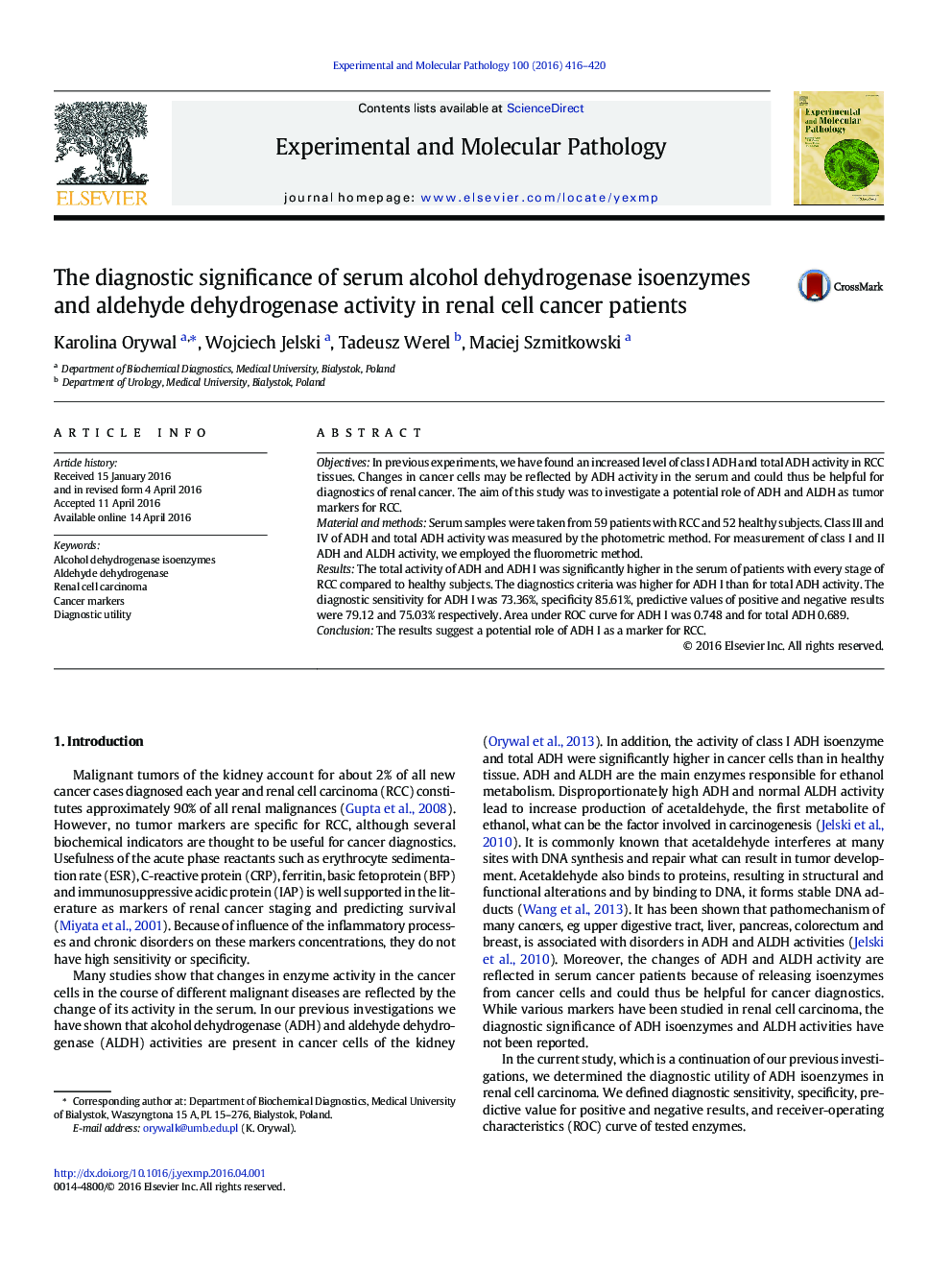| Article ID | Journal | Published Year | Pages | File Type |
|---|---|---|---|---|
| 2774855 | Experimental and Molecular Pathology | 2016 | 5 Pages |
•We measured ADH isoenzymes and ALDH activities in the sera of 59 patients with clear cell renal cell carcinoma•We employed photometric method and fluorometric method•The activity of class I ADH and total ADH were significantly higher in the sera of patients with renal cell cancer than in controls•The diagnostics criteria was higher for ADH I than for total ADH activity•The results suggest a potential role of ADH I as a marker for RCC
ObjectivesIn previous experiments, we have found an increased level of class I ADH and total ADH activity in RCC tissues. Changes in cancer cells may be reflected by ADH activity in the serum and could thus be helpful for diagnostics of renal cancer. The aim of this study was to investigate a potential role of ADH and ALDH as tumor markers for RCC.Material and methodsSerum samples were taken from 59 patients with RCC and 52 healthy subjects. Class III and IV of ADH and total ADH activity was measured by the photometric method. For measurement of class I and II ADH and ALDH activity, we employed the fluorometric method.ResultsThe total activity of ADH and ADH I was significantly higher in the serum of patients with every stage of RCC compared to healthy subjects. The diagnostics criteria was higher for ADH I than for total ADH activity. The diagnostic sensitivity for ADH I was 73.36%, specificity 85.61%, predictive values of positive and negative results were 79.12 and 75.03% respectively. Area under ROC curve for ADH I was 0.748 and for total ADH 0.689.ConclusionThe results suggest a potential role of ADH I as a marker for RCC.
